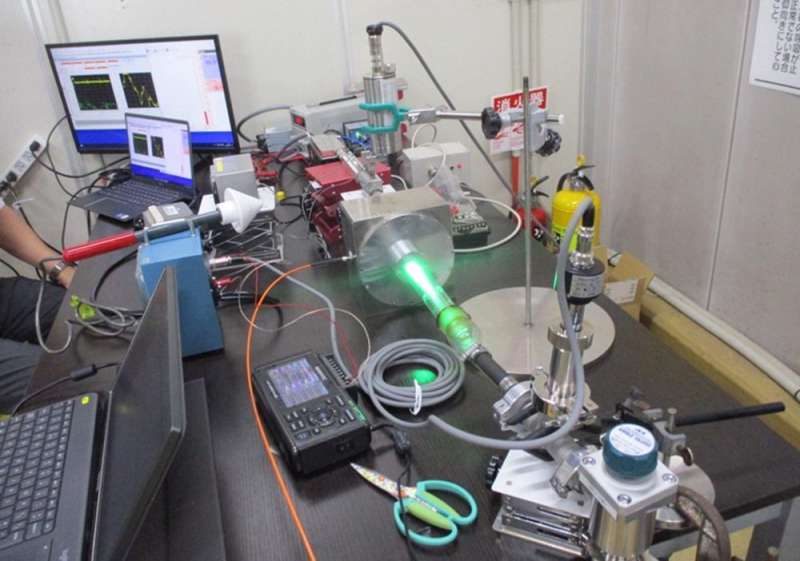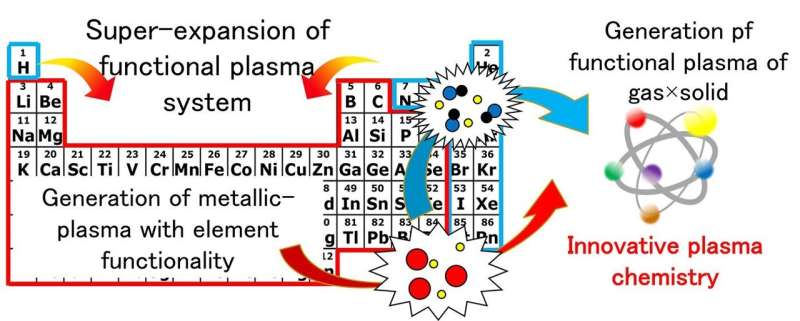This article has been reviewed according to Science X's editorial process and policies. Editors have highlighted the following attributes while ensuring the content's credibility:
fact-checked
peer-reviewed publication
trusted source
proofread
Strong microwave magnetic fields for more efficient plasmas

Hot gases composed of metal ions and electrons, called plasmas, are widely used in many manufacturing processes, chemical synthesis, and metal extraction from ores and welding. A collaborative research group from Tohoku University and the Toyohashi University of Technology has invented a new and efficient method to create metallic plasmas from solid metals under a strong magnetic field in a microwave resonator. They report their innovation in the journal AIP Advances.
In the most conventional methods for making plasmas, a strong electric field is applied to gases or liquids. This can require enormous amounts of energy. More recently, microwave radiation has also been harnessed to generate plasmas as it converts atoms into a form that can more effectively drive desired chemical processes, among other advantages. The plasmas generated by microwaves are now being used in commercial processes, including semiconductor manufacture, diamond deposition and to release metals from their ores.
Until now, however, this has involved multi-mode microwave generators, which generate a chaotic distribution of microwaves. One key advance achieved by the team is to apply a single-mode microwave generator to produce their metal plasmas. This creates more controlled and highly focused microwaves.
"We expect our process could significantly improve the efficiency of plasma techniques in many applications, and enhance profitability in the commercial arena," says chemist Jun Fukushima, who developed the technique with electronic engineer Satoshi Fujii.

One significant challenge the researchers encountered was that their initial plasmas could not be stabilized for more than ten minutes. They therefore redesigned the equipment, eventually achieving much longer stability. The final and more innovative system contains a double quartz tube, with the solid material that is converted into the plasma sitting within the inner tube.
The researchers expect their technology will be especially useful for extracting pure rare earth metals from their ores. These metals, such as cerium, lanthanum and neodymium, are becoming widely used in large-scale applications, including the manufacture of rechargeable batteries for electric vehicles. The Tohoku University and the Toyohashi University of Technology team has already demonstrated using a plasma of calcium and magnesium to release scandium and vanadium atoms from their oxide ores.
"This is a new and unconventional method for utilizing plasmas, which we consider to be crucial for reducing the energy requirements for future materials science applications," says Fukushima.
More information: Satoshi Fujii et al, Metal ion plasma generation under strong magnetic field in microwave resonator, AIP Advances (2023). DOI: 10.1063/5.0134071
Journal information: AIP Advances
Provided by Tohoku University





















